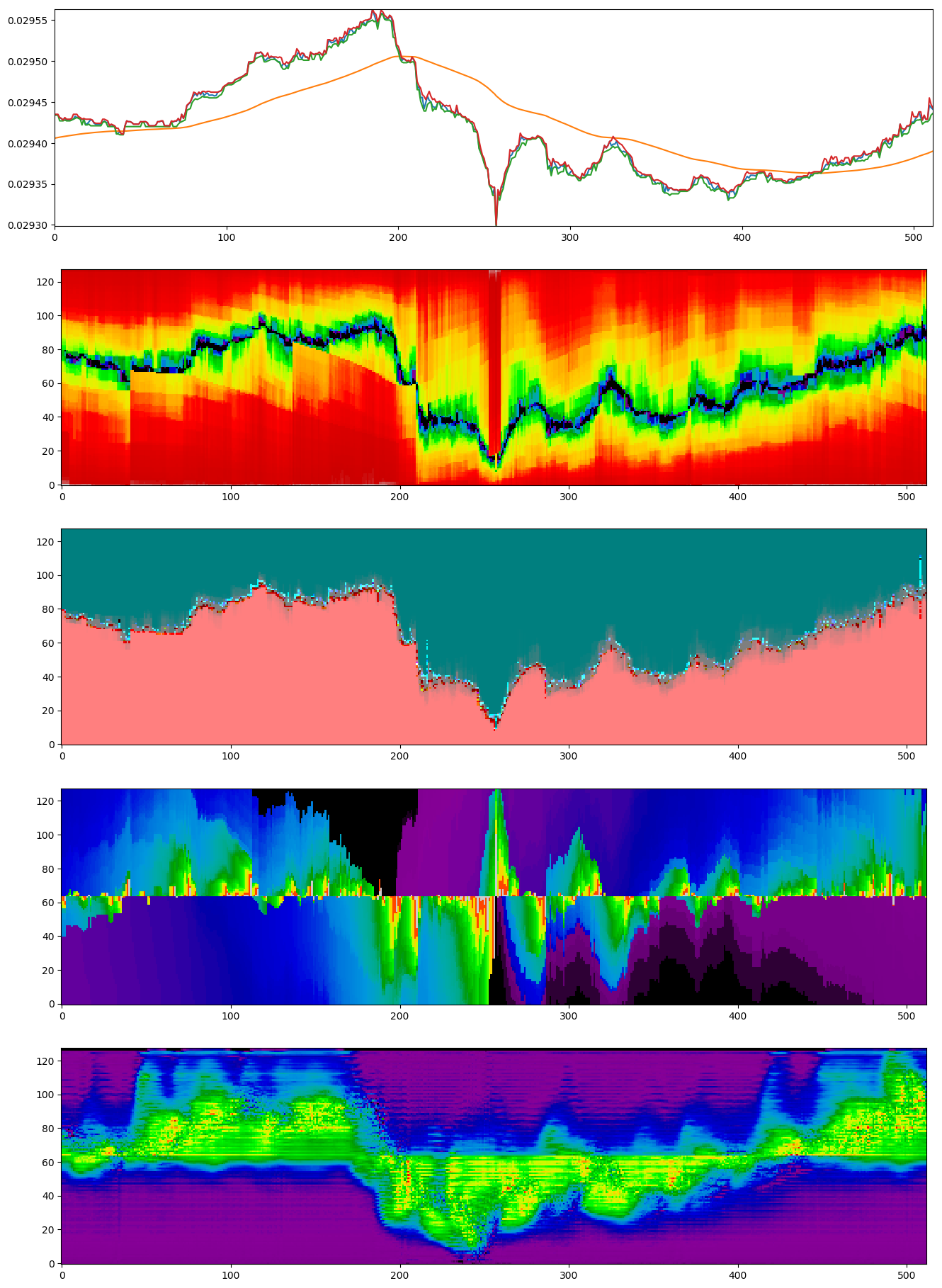Deep OrderBook is an advanced cryptocurrency order book analysis toolkit that transforms order book data into temporally and spatially local-correlated representations for quantitative analysis and deep learning applications.
While conventional technical analysis often relies on price-derived indicators like moving averages, order books contain rich organic information about market microstructure and supply/demand dynamics. Deep OrderBook captures this information by:
- Processing real-time and historical order book data
- Converting multi-dimensional order book states into feature-rich representations
- Enabling visualization and machine learning on these representations
Check out our short demo video:
- Live Data Collection: Connect to cryptocurrency exchanges (Coinbase, etc.) for real-time order book data
- Historical Replay: Replay and analyze historical order book data with precise timing
- Visualization Tools: Rich visualizations of order book dynamics and patterns
- Machine Learning Integration: Pre-process order book data for ML applications
- Asyncio-based Architecture: Non-blocking I/O for efficient data processing
- Type-Safe Implementation: Fully type-annotated codebase with Pydantic data validation
- Python 3.12 or higher
- API credentials (for live data)
-
Clone the repository:
git clone https://github.com/gQuantCoder/deep_orderbook.git cd deep_orderbook -
Set up API credentials: Create a file
credentials/coinbase.txtwith your API details:api_key="organizations/xxxxxxxxxxx-xxxx-xxxx-xxxx-xxxxxxxxxxxx/apiKeys/xxxxxxxxx-xxxx-xxxx-xxxx-xxxxxxxxxxxxx" api_secret="-----BEGIN EC PRIVATE KEY-----\xxxxxxxxxxxxxxxxx...xxxxxxxxxxxxxxxxxxx\n-----END EC PRIVATE KEY-----\n" -
Install the package:
pip install -r requirements.txt pip install -e .
To capture live order book data from exchanges, use the recorder module:
# Start the recorder with default settings
python -m deep_orderbook.consumers.recorder
# Alternatively, you can run it directly
python deep_orderbook/consumers/recorder.pyThe recorder will:
- Connect to the configured exchanges
- Save order book updates and trades to parquet files
- Store files in the configured data directory
- Automatically rotate files at midnight
The project includes several Jupyter notebooks for different analysis scenarios:
- Live Analysis:
live.ipynb- Connect to exchange and visualize live order book - Historical Replay:
replay.ipynb- Replay and analyze historical order book data - Machine Learning:
learn.ipynb- Examples of applying ML to order book features
Deep OrderBook is built on an event-driven architecture:
┌─────────────┐ ┌───────────┐ ┌─────────┐ ┌──────────────┐
│ Data Sources│────►│ Processors│────►│ Shapers │────►│ Visualizers/ │
│ (Exchanges) │ │ │ │ │ │ ML Models │
└─────────────┘ └───────────┘ └─────────┘ └──────────────┘
- Data Sources: Exchange APIs, historical data files
- Processors: Convert raw data to standard format
- Shapers: Transform order book snapshots into feature matrices
- Consumers: Visualization tools, ML models, trading signals
Run the test suite:
pytestContributions are welcome! Please feel free to submit a Pull Request.
This project is licensed under the MIT License - see the LICENSE file for details.
- Thanks to all contributors and the quant trading community


